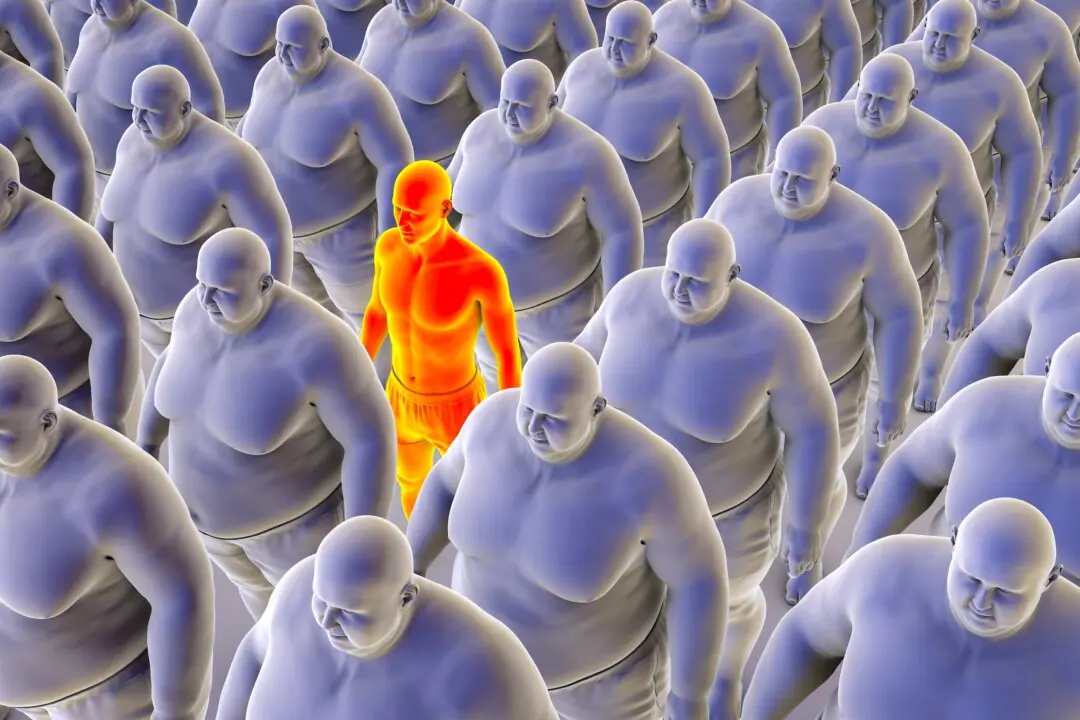Two out of three Americans are now either overweight or obese. Obesity has become the number one form of malnutrition in the country, and no group has been hit harder than our children.
Childhood obesity in the US has nearly tripled since 1980, and one in five kids is now overweight by age six; 17 percent of children and adolescents are obese.
As noted in a recent article by investigative health reporter Martha Rosenberg, the weight of the average American increased by 24 pounds in the four decades between 1960 and 2000.
In her article, she reviews five scientifically-backed factors that contribute to Americans’ expanding waist lines, which I'll review here. I’ve also covered all of these more in-depth in previous articles, so for additional details, please follow the hyperlinks provided.
Contrary to popular belief, obesity is not simply the result of eating too many calories and not exercising enough.
#1: Antibiotics in Food and Medicine
Compelling evidence suggests antibiotic overuse and obesity are intricately linked, although the reasons why didn’t become clear until we discovered how your microbiome influences your weight.Beneficial bacteria (probiotics) are, in fact, so crucial to your health that researchers have compared them to “a newly recognized organ,” and have even suggested we consider ourselves a type of “meta-organism.”
This is an acknowledgment of the fact that we cannot be healthy without the participation of a vast array of beneficial microbes. While overused in medicine, the primary source of antibiotic exposure is actually through your diet.
#2 Other Growth-Enhancing Drugs Used in Livestock
Other growth-enhancing drugs are also used to fatten up livestock, and these too may wreak havoc on your health. Ractopamine is one example. This beta-agonist drug works as a growth promoter by increasing protein synthesis, thereby making the animal more muscular.In human medicine, beta-agonists are also found in asthma medication, and stubborn weight gain is in fact a common complaint among asthma patients using Advair (a beta-agonist drug)—so much so that the manufacturer has added weight gain to the post-marketing side effects.
Many of the growth-enhancers routinely used in the US are banned around the world for their potential health hazards, which go far beyond weight gain.
Many confined animal feeding operations (CAFOs) also use hormones to boost growth, and this routine practices is also banned in many other countries. As noted by Rosenberg:
#3: Endocrine Disrupting Chemicals, Including Pesticides
Many common household chemicals are known as endocrine disruptors, a number of which are found in plastic products. These chemicals are similar in structure to natural sex hormones such as estrogen, and can interfere with their normal functions.Some of the most pervasive examples include bisphenol-A (BPA), PCBs, phthalates, triclosan, agricultural pesticides, and fire retardants.

#4: Artificial Sweeteners
The business of artificial sweeteners is built on the idea that no- or low-calorie sugar substitutes will help you lose weight. Unfortunately, this simply isn’t true. Research has repeatedly shown that artificially sweetened “diet” foods and beverages tend to stimulate your appetite, increase cravings for carbs, and stimulate fat storage and weight gain.Part of the problem is that artificial sweeteners trick your body into thinking that it’s going to receive sugar (calories), and when the sugar doesn’t arrive, your body signals that it needs more, which results in carb cravings. This connection between sweet taste and increased hunger can be found in the medical literature going back at least two decades.
#5: Aggressive Stealth Marketing of Junk Food
Last but not least, there’s the issue of junk food marketing, which is particularly detrimental when aimed at kids. Kids are quite literally being deceived and manipulated into destroying their health potential by junk food companies seeking revenue. There’s really nothing “accidental” about rising childhood obesity rates when you take deceptive marketing into account... Marketing to children has actually turned into a full-blown science. For example, “the nag factor” has been studied to the point that marketers can be advised on what kind of tantrums are most likely to push parents into giving in to their child’s demands!The avenues for marketing have also grown exponentially over the past 30 years, thanks to rapidly evolving technological advances. Marketing is no longer restricted to TV and magazine ads. Kids are now exposed to marketing via brand licensing, product placement, schools, stealth marketing, viral marketing, DVDs, games, and the internet. According to a 2013 report by the Institute of Medicine (IOM), children aged 2-11 now see an average of more than 10 television food ads per day. And nearly all (98 percent) of these are for products that are high in processed, damaged fats, sugar, and/or sodium. Most (79 percent) are low in fiber.
What we’re seeing is a rise of “360 degree immersive marketing,” designed to turn children into loyal lifelong consumers, and when it comes to processed foods, kids are being brainwashed into believing junk foods will make them healthy and happy. The truth, however, is diametrically opposed to such propaganda...
Your Weight Reflects Your Lifestyle Choices
As you can see, a number of factors can contribute to your weight problem. Simply eating fewer calories and exercising more usually doesn’t work very well, and the reason for that is because not all calories are the same. Rather than focusing on calories, you need to address the quality of the foods you eat, and avoid chemical exposures. Many people end up throwing their hands up in disgust when trying to clean up their diet, complaining that once they start to read labels, they realize there’s “nothing safe to eat.” If this sounds like you, you’re probably still looking at processed foods, trying to figure out which ones are “good” for you, and that’s the problem.The list of ingredients to avoid is just about endless, and keeping track of it can be really discouraging. The answer is to create a list of healthy options instead, which is far shorter and easier to remember. And, when it comes to advertising, keep in mind that whole unadulterated “real foods” are rarely if ever advertised, so if you’re seeing an ad for a food that promises to do you a world of good, it’s probably misleading...
The following short list of just three super-simple, easy-to-remember guidelines will not only improve your nutrition, it will also help you avoid countless chemical exposures that can affect your weight:
Speaking of fats, most people need upwards of 50-85 percent healthy fats in their diet for optimal health. Sources of healthy fats to add to your diet include avocados, butter made from raw grass-fed organic milk, raw organic dairy, coconuts and coconut oil, unheated organic nut oils, raw nuts and seeds, organic pastured egg yolks, and grass-fed meats.





